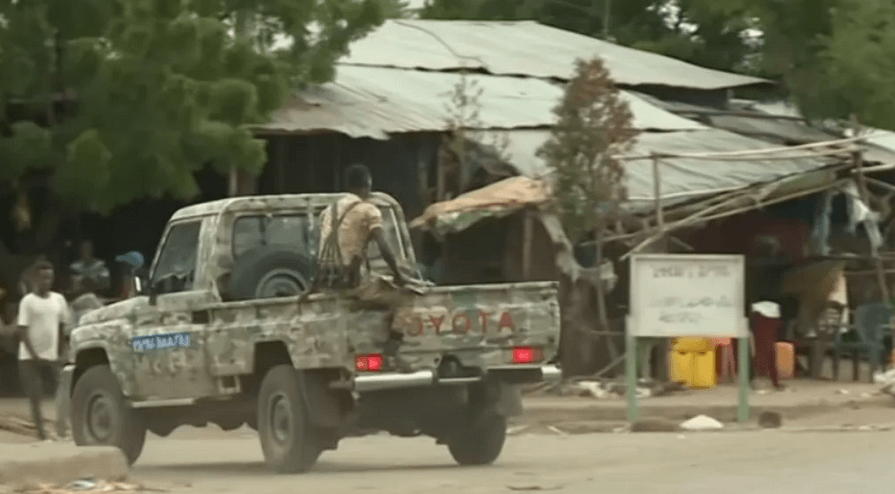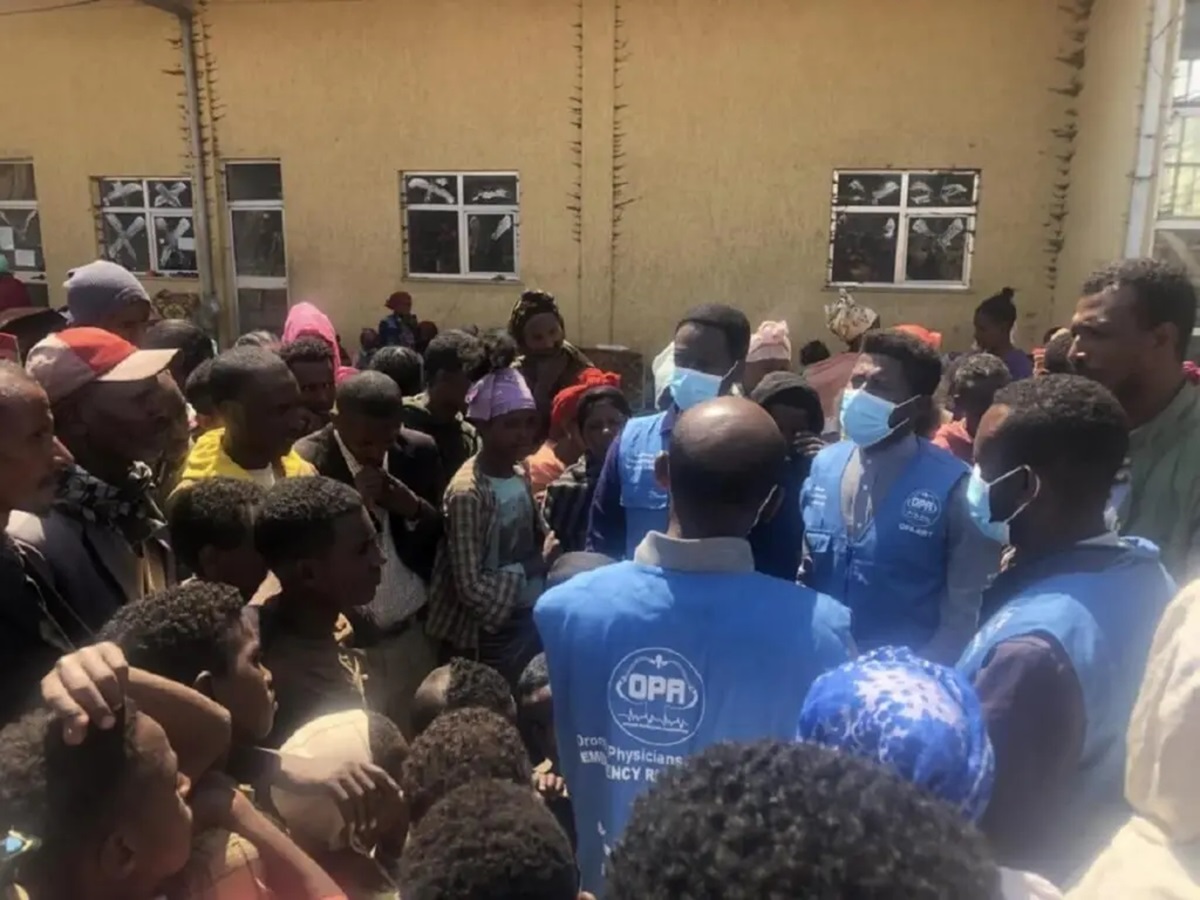Opinion: The Qilinto Massacre: the truth shall be revealed
By Zecharias Zelalem, special to Addis Standard
On Saturday, September 3rd 2016, something sinister, ghastly, premeditated and honestly speaking somewhat poorly calculated, transpired in the Ethiopian capital of Addis Abeba. The tragedy in question has, for the most part, managed to avoid the sort of outcry and global condemnation these incidents tend to get when the actors involved are from nations not allied with the United States and its NATO affiliates in their “war on terror.” It has been more than two weeks, and already we are faced with subliminal calls from the conceited to pretend it didn’t happen.
At eight in the morning of that fateful day, the Addis Abeba sky, normally coated with layers of the rainy season’s fog was, assaulted by billowing smoke emanating from a raging fire that was consuming parts of the city’s Qilinto prison, home to hundreds of inmates including many political prisoners, activists, journalists and others who, frankly, don’t belong on the premises at all. By all accounts, the fire, which burned and ravaged the prison’s facilities before it was put down by the city’s firefighting brigade, was accompanied by a clearly audible orchestra of automatic gunfire. Exactly who was doing the shooting wasn’t clear nor was it evident who or what was being targeted.
Even before the necessary forces were deployed to secure the safety of the prisoners inside and put a halt to the blaze, federal police officers had cordoned off the area surrounding Qilinto prison and were preventing family and friends of those inside from converging on the scene to inquire about the safety of their loved ones trapped inside. Before any sincere effort to address what should have been the primary concerns, ensuring the wellbeing of everyone within the confines of the prison and rescuing those trapped by the far, regime forces were deployed almost immediately to keep everyone outside of the prison at bay. Regime apologists were quick to claim whatever action was taken was for the public’s security. Almost immediately, however, bystanders and eye-witnesses took to social media to scrutinize every maneuver of the forces enforcing the lockdown of the surrounding areas. Days later it’s easy to say that a significant percentage of Ethiopians believe that there was a deliberate attempt to conceal what was nothing short of a mass killing of prisoners.
Qilinto prison, located on the southern outskirt of the capital city, is where many of Ethiopia’s social justice seeking stalwarts were incarcerated. Many of them are being held there, charged under the vaguely defined anti-terrorism laws that are widely believed to be a part of legislation aimed at stifling dissent. Among the very well-known prisoners were Oromo Federal Congress general secretary and Medrek party member Bekele Gerba, former Semayawi party member Yonatan Tesfaye and Getachew Shiferaw, a journalist. It is said that some 224 prisoners were present at Qilinto when the fire started.
With the countless journalists, academic intellects, opposition party members, bloggers and other dynamic personalities held with and without charges, one can say that Qilinto has become a prison for Ethiopia’s outspoken enlightened. Among them, revolutionaries whose statements, actions, and sacrifices have inspired the nationwide protest movements which have galvanized the peoples of the Amhara and Oromo regions of the country to rise and revolt. Recently, letters from several well-known incarcerated activists, including Bekele Gerba, were smuggled out of the prison by people sympathetic to the Oromo Protests and Amhara Protests causes. These letters called on people to observe a week of mourning and shave their heads in solidarity with the struggle. Countless people in the country and abroad have heeded the calls, which showed that despite the incarceration of countless men and women of Ethiopia’s social justice movements, they will continue to be lionized by the population at large and wield an influence that the EPRDF regime is finding it quite difficult to counter.
The prison is also notorious for being a torture chamber. Prisoners have often complained of frequent beatings and psychological torture at the hands of their interrogators. The ill treatment becoming unbearable sparked a hunger strike by prisoners earlier this year. Human rights organizations frequently refer to the Qilinto and Maekelawi prison institutions as gulags.
Be this as it may, the horrors of the correctional facility were apparently not enough to dampen the fighting spirits of the protest movement supporting activists and spokespeople locked up inside. From within their cells, they had managed to defile the terms of their incarceration and rallied people in the country and around the world to take up their cause and popularize the struggle to great effect.
So when reports of the blaze at the prison started flooding the Ethiopian social media sphere, it quickly became the trending talking point. The wellbeing of the prisoners inside, the revolutionaries who inspired Ethiopians to take up civil disobedience en masse was an utmost concern across the country.
Witness accounts testify to gunshots being heard, but so far nobody has any reliable information on casualty figures as regime forces managed to quickly seal off the area and remain tight-lipped about what had even started the fire. Hours after the fire had come under control, an unnamed official from the Ethiopian Federal Prisons Administration told state-affiliated broadcaster Fana Broadcasting Corporation (FBC) that one person had died in the fire while six others were being treated at hospitals in the city. Three firefighters were also apparently hospitalized for smoke inhalation. The official gave no explanation whatsoever for the immediate sealing off of the area by federal forces or for the gunfire that was heard coming from the vicinity of the prison.
Several other media reports claimed different causes and casualty figures all within the first twenty-four hours of the blaze. And although few media continue writing about it none of these reports contain the actual names of prisoners affected, leaving thousands of friends and family members of prisoners in a desperate state to know whether their acquaintances were dead or alive.
Meanwhile, several reports put the death toll as high as thirty, and that nearly all of them had died of gunshot wounds. A week after the fire had been contained and the cleanup process had begun, people were still being forced away from the area and were refused access to the prison. Relatives were seen wailing in tears as they were left in the anguish of not knowing whether their loved ones were alive or had been trampled to death, burnt alive, or shot.
“I don’t even know if my son is dead or alive!” Yonatan Tesfaye’s mother told Voice of America (VOA). “I went to all the hospitals and asked for information but got nothing. My son could have been burnt or even shot to death. How can I carry on without knowing where my own son is?”
Relatives have spoken of being harassed, intimidated and threatened by the federal police officers surrounding Qilinto upon returning to the site. What they have been subjected to is beyond comprehension. It’s inhumane to withhold this vital information from them for this length of time. The pain and misery of being in limbo and not knowing whether someone is alive or suffered an agonizing death is extremely torturing and mentally draining.
After days in which a plethora of media reports and witness accounts depicting the perpetration of a possible massacre of a large number of prisoners, the government decided to break its silence. Perhaps upon realizing that this wouldn’t be forgotten and put on the back burner, the government released another statement via the FBC once again claiming what many have described as a pathetic attempt at damage control. According to the government version of events, twenty-three inmates have died in the fire, of whom two were killed trying to escape.
This last addition would have been the cause of quite some hilarity had the subject not been so tragic. The story of prisoners and the area’s inhabitants working together to put the fire out is a complete fabrication, to say the least. It is true that very few can claim to have seen what actually happened within the prison grounds during the fire, but every credible account of the events that day go into great detail about how the prison was blocked off from the public. The government in Ethiopia is going to have a hard time selling the story of a sizeable contingent of neighborhood volunteers somehow breaching the police barriers and aiding in the battle to put out the flames. If these make belief vigilante firefighters had really gained access to the eye of the fire, it would have been because there were no police blockades set up. But we know this isn’t the case.
Had there been any truth to this version of events, a significant number of prisoners who the regime claims to have taken part in the firefighting efforts, could have been confirmed as still being alive. There have been no reports of this whatsoever. None of the countless social media campaigners and media outlets combing the story for information have managed to come across a family member of an inmate who could testify that their loved one is alive and well after having aided in the firefighting efforts. It appears that government officials responsible for the report failed to do the most basic of fact finding. Had they done so, they would have probably produced something slightly more believable.
The government’s statement also conveniently omitted the names of the dead and wounded, which only served to heighten fears that the death toll was much higher than what was being stated. There was no information on the prisoners, except that some survivors would be relocated to other prisons. After a hollow message of condolences, the statement concluded with a note that the prison was being renovated and that inmates and relatives should “wait patiently.”
The report was no source of solace for relatives who finally heard the official admission that a large number of prisoners had indeed died at the prison. There is still no information on the individual fate of each prisoner. Upon hearing that some were being transferred to other prisons, the gates of several prisons in Addis Abeba and its environs, as well as the notorious prison in Ziway, 200 south of Addis Abeba, were flooded with friends and family of the detainees, desperate for answers.
It would be six days before the names of relocated prisoners with their locations would be available for public viewing. The impatient masses, who had suffered sleepless nights, and were weary of the stress and extreme anxiety, converged on the prison once again. This time, they were told they would be aided by the prison personnel in relocating their loved ones.
According to one person who is related to a Qilinto inmate, the relatives have to show up at the prison then pray that the name of their loved one is on it. She was able to trace her uncle’s location after his name appeared on the list of transferees. Through this process in which even more mental torment is inflicted upon the already deeply scarred friends and family, they can find out whether or not a prisoner is alive.
Try to imagine a mother, a father, a sister or a friend repeatedly going through the lists of transferees and failing to find the name of their loved one. It has got to be the worst way imaginable to receive the heartbreaking news that a loved one is dead. Imagine searching through a written list of names looking for the names of loved ones, the angst of not being able to find the name and processing the grim reality that you have lost that person forever.
If what the Qilinto families have experienced over the last two weeks wasn’t enough, there are at the very minimum (and without a doubt much more than) twenty-three who will end their search for answers with a gutting final moment of sorrow in front of merciless prison guards and the failure to find a name on the list of life.
Until now the government maintains the unfortunate events of September 3rd 2016 were all part of a prisoner plot to break out of jail gone horribly awry. The slow paced, gradual release of information, the refusal to publish the names of victims, the locking down of the Qilinto prison area and the uncooperative nature of the prison authorities all hint at an extremely botched cover-up of a mass killing of prisoners.
If this wasn’t enough, the version released by the government appears to have been at least partially concocted and contradicted known facts. From the death toll, to the sequence of events, the repeated releasing of statements that have proven to be completely false can only dent the credibility of the official story. From day one officials have been reluctant to address the public. It even took two full days for the government to send out the half-hearted note of condolences. Nobody from the prison authority, the federal police forces or even the hospitals has appeared on camera in an attempt to substantiate the claims of the official version. The official version has too many holes in it. Nobody is hosting a press conference; no autopsy reports have been released; the relatives of the fallen inmates haven’t even been able to retrieve the bodies of their loved ones. Doing so would perhaps reveal the causes of death and serve to further debunk the listless attempt by the government in Ethiopia to cover up the callous killings of unarmed Ethiopians, for what would be the umpteenth time this year. The government and all those involved in hiding the Qilinto massacre of September 3rd are knee deep in a mess needlessly created.
Truth shall be revealed
Families of the Qilinto prison ended the year 2008 of the Ethiopian calendar traumatized and systematically brutalized after being forced to play a life and death waiting game, deprived of information on the fates of their sons and daughters for more than two weeks now. The psychopaths who pulled the levers and engineered the catastrophe were vile enough to sit back patiently and expect a population to go about their holiday preparations.
But the age of technology has proven damaging to authoritarianism. The spread of information can no longer be contained and attempts at shoving a brutal prison massacre under the rug of irrelevance are proving to be futile. The Qilinto massacre will not remain buried. Soon or later the facts will see the light of the day. The attempts at pulling the wool over the Ethiopian public’s eyes are failing miserably. A resolute population determined to unearth the truth at all costs won’t let the fallen of Qilinto be forgotten without a trace.
In these times of sorrow and grief, one cannot console those devastated beyond measure, but we can hope the families and friends of the Qilinto massacres will rise from their pain, fueled by a desire to seek justice and the proper recognition for what happened more than two weeks ago today.
Photo caption: a thick smoke that covered the sky where Qilinto prison is located at in southern part of Addis Abeba.
Photo: Social media







